Carrier 30RY-RYH, 30RA-RH User Manual
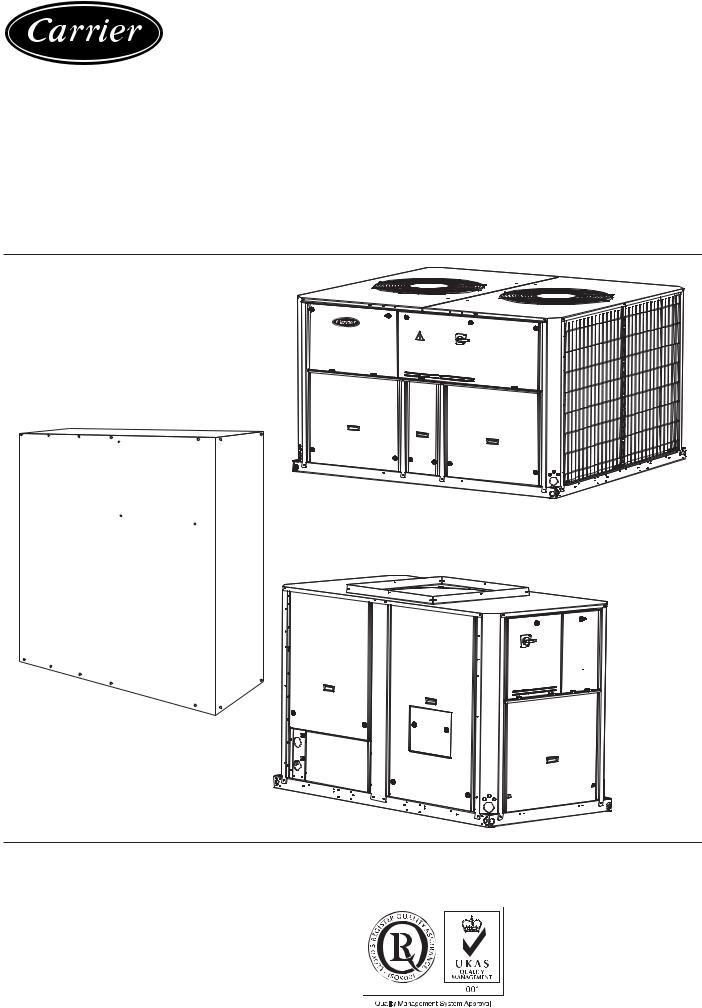
30RA/RH “B” 30RY/RYH “B”
PRO-DIALOG Control
AQUASNAP
Operation and maintenance instructions
|
TABLE OF CONTENTS |
|
1 - SAFETY CONSIDERATIONS.................................................................................................................................................. |
4 |
|
1.1 |
- General ................................................................................................................................................................................. |
4 |
1.2 |
- Avoid electrocution .............................................................................................................................................................. |
4 |
2 - GENERAL DESCRIPTION ...................................................................................................................................................... |
4 |
|
2.1 |
- General ................................................................................................................................................................................. |
4 |
2.2 |
- Abbreviations used ............................................................................................................................................................... |
4 |
3 - HARDWARE DESCRIPTION .................................................................................................................................................. |
5 |
|
3.1 |
- General ................................................................................................................................................................................. |
5 |
3.2 |
- Electrical supply to boards ................................................................................................................................................... |
5 |
3.3 |
- Light emitting diodes on boards ........................................................................................................................................... |
5 |
3.4 |
- The sensors ........................................................................................................................................................................... |
5 |
3.5 |
- The output controls ............................................................................................................................................................... |
5 |
3.6 |
- Connections at the user's terminal block .............................................................................................................................. |
6 |
|
3.6.1 - General description ...................................................................................................................................................... |
6 |
|
3.6.2 - Volt-free contact on/off/cooling/heating without multiplexing .................................................................................. |
8 |
|
3.6.3 - Volt-free contact on/off/cooling/heating with multiplexing........................................................................................ |
8 |
|
3.6.4 - Demand limit or setpoint volt-free contact for single-circuit units ............................................................................. |
8 |
|
3.6.5 - Demand limit volt-free contact for dual-circuit units .................................................................................................. |
8 |
|
3.6.6 - Water setpoint selection volt-free contact with multiplexing for dual-circuit units .................................................... |
8 |
4 - SETTING UP PRO-DIALOG CONTROL .............................................................................................................................. |
9 |
|
4.1 |
- Local interface general features ............................................................................................................................................ |
9 |
4.2 |
- Unit start/stop control ......................................................................................................................................................... |
10 |
|
4.2.1 - Description ................................................................................................................................................................. |
10 |
|
4.2.2 - Stopping the unit in local mode ................................................................................................................................. |
10 |
|
4.2.3 - Starting unit and selecting an operating type ............................................................................................................. |
10 |
4.3 |
- Menus ................................................................................................................................................................................. |
11 |
|
4.3.1 - Selecting a menu ........................................................................................................................................................ |
11 |
|
4.3.2 - Selecting a menu item ................................................................................................................................................ |
11 |
|
4.3.3 - Modifying the value of a parameter/access to a sub-menu ........................................................................................ |
11 |
|
4.3.4 - Expand display ........................................................................................................................................................... |
12 |
|
4.3.5 - Description of the Information menu ......................................................................................................................... |
15 |
|
4.3.6 - Description of the Temperatures menu ...................................................................................................................... |
17 |
|
4.3.7 - Description of the Pressures menu............................................................................................................................. |
17 |
|
4.3.8 - Description of the Setpoints menu ............................................................................................................................. |
17 |
|
4.3.9 - Description of the Inputs menu .................................................................................................................................. |
18 |
|
4.3.10 - Description of the Outputs/Tests menu ................................................................................................................... |
19 |
|
4.3.11 - Description of the configuration menu .................................................................................................................... |
22 |
|
4.3.12 - Description of the Alarms menu .............................................................................................................................. |
28 |
|
4.3.13 - Description of the Alarms History menu ................................................................................................................. |
28 |
|
4.3.14 - Runtime menu description ....................................................................................................................................... |
28 |
2
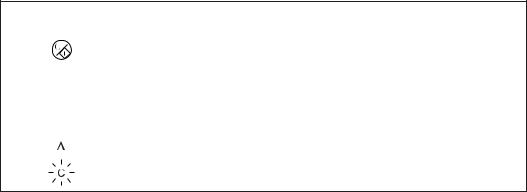
5 - PRO-DIALOG CONTROL OPERATION ............................................................................................................................ |
29 |
||
5.1 |
- Start/stop control ................................................................................................................................................................ |
29 |
|
5.2 |
- Heating/cooling operation .................................................................................................................................................. |
30 |
|
|
5.2.1 - General ....................................................................................................................................................................... |
30 |
|
|
5.2.2 - Heating/cooling selection .......................................................................................................................................... |
30 |
|
5.3 |
- Evaporator water pump control .......................................................................................................................................... |
31 |
|
5.4 |
- Control interlock contact .................................................................................................................................................... |
31 |
|
5.5 |
- Evaporator heater control ................................................................................................................................................... |
31 |
|
5.6 |
- Control point ....................................................................................................................................................................... |
31 |
|
|
5.6.1 - Active setpoint ........................................................................................................................................................... |
31 |
|
|
5.6.2 - Reset........................................................................................................................................................................... |
33 |
|
5.7 |
- Demand limit ...................................................................................................................................................................... |
33 |
|
5.8 |
- Night mode ......................................................................................................................................................................... |
33 |
|
5.9 |
- Capacity control .................................................................................................................................................................. |
33 |
|
5.10 |
- Head pressure control ....................................................................................................................................................... |
33 |
|
5.11 |
- Defrost function ................................................................................................................................................................ |
34 |
|
5.12 |
- Additional electric heater stage control ............................................................................................................................ |
34 |
|
5.13 |
- Control of a boiler ............................................................................................................................................................ |
34 |
|
5.14 |
- Master/slave assembly ...................................................................................................................................................... |
34 |
|
5.15 |
- Controlling Pro-Dialog units with a System Manager ..................................................................................................... |
34 |
|
6 - DIAGNOSTICS - TROUBLESHOOTING ............................................................................................................................ |
35 |
|
6.1 |
- General ............................................................................................................................................................................... |
35 |
6.2 |
- Displaying alarms ............................................................................................................................................................... |
35 |
6.3 |
- Resetting alarms ................................................................................................................................................................. |
35 |
6.4 |
- Alarm codes ........................................................................................................................................................................ |
35 |
GENERAL LEGEND
Each of the following drawings is replaced in the whole document by the corresponding explanation:
Start/stop button
 Return key
Return key
 Down arrow
Down arrow
 Up arrow
Up arrow
DELTA T. Example: temperature difference between entering and leaving heat exchanger temperatures
means character is flashing
The cover graphics are solely for illustration and forms no part of any offer for sale or any sale contract. The manufacturer reserves the right to change the design at any time without notice.
3
1 - SAFETY CONSIDERATIONS
1.1 - General
Installation, start-up and servicing of equipment can be hazardous if certain factors particular to the installation are not considered: operating pressures, presence of electrical components and voltages and the installation site (elevated plinths and built-up up structures). Only properly qualified installation engineers and highly qualified installers and technicians, fully trained for the product, are authorised to install and start-up the equipment safely. During all servicing operations all instructions and recommendations which appear in the installation and service instructions for the product, as well as on tags and labels fixed to the equipment and components and accompanying parts supplied separately, must be read, understood and followed.
•Apply all standard safety codes and practices.
•Wear safety glasses and gloves.
•Use the proper tools to move heavy objects. Move units carefully and set them down gently.
1.2 - Avoid electrocution
Only personnel qualified in accordance with IEC (International Electrotechnical Commission) recommendations may be permitted access to electrical components. It is particularly recommended that all sources of electricity to the unit be shut off before any work is begun. Shut off the main power supply at the main circuit breaker or isolator.
IMPORTANT: This equipment uses and emits electromagnetic signals. Tests have shown that the equipment conforms to all applicable codes with respect to electromagnetic compatibility.
RISK OF ELECTROCUTION: Even when the main circuit breaker or isolator is switched off, certain circuits may still be energised, since they may be connected to a separate power source.
RISK OF BURNS: Electrical currents cause components to get hot either temporarily or permanently. Handle power cable, electrical cables and conduits, terminal box covers and motor frames with great care.
Fanstart-up:
ATTENTION: In accordance with the operating conditions the fans can be cleaned periodically. A fan can start at any time, even if the unit has been shut down.
2 - GENERAL DESCRIPTION
2.1 - General
Pro-Dialog is a system for controlling single or dual-circuit 30RA/RY air-cooled liquid chillers or air-to-water 30RH/RYH heat pumps. Pro-Dialog controls compressor start-up needed to maintain the desired heat exchanger entering or leaving water temperature. In cooling mode it controls the operation of the fans to maintain the correct condensing pressure in each circuit. For heat pump units it controls and optimises the defrost cycles of each circuit in order to minimize the heating capacity reduction. Safety devices are constantly monitored by ProDialog to ensure their safe operation. Pro-Dialog also gives access to a Quick Test program covering all inputs and outputs.
All PRO-DIALOG controls can work in accordance with three independent modes:
•Local mode: the machine is controlled by commands from the user interface.
•Remote mode: the machine is controlled by remote contacts (volt-free contacts).
•CCN mode: the machine is controlled by commands from the Carrier Comfort Network (CCN). In this case, a data communication cable is used to connect the unit to the CCN communication bus.
The operating mode must be chosen with the Start/Stop button described in section 4.2.1. When the PRO-DIALOG system operates autonomously (Local or Remote mode) it retains all of its own control capabilities but does not offer any of the features of the CCN network.
2.2 - Abbreviations used
In this manual, the refrigeration circuits are called circuit A and circuit B. The compressors in circuit A are labelled A1, A2 and A3. Those in circuit B are B1, B2 and B3.
The following abbreviations are used frequently:
CCN |
: Carrier Comfort Network |
CCn |
: Operating type: CCN |
LED |
: Light Emitting Diode |
LOFF : Operating type: Local Off |
|
L-On |
: Operating type: Local On mode |
L-Sc |
: Operating type: Local On following a time schedule |
MASt : Operating type: master unit (master/slave assembly)
rEM |
: Operating type: by remote contacts |
SCT |
: Saturated Condensing Temperature |
SIO |
: Sensor Bus (internal communication bus linking the |
|
basic board to the slave boards) |
SST |
: Saturated Suction Temperature |
TXV |
: Thermal Expansion Valve |
4
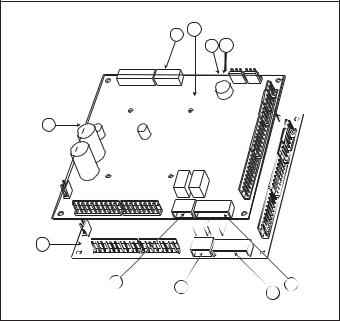
3 - HARDWARE DESCRIPTION
3.1 - General
Figure 1
4 |
|
|
1 |
|
|
2 |
3 |
|
9 |
|
|
3 |
|
|
10 |
|
|
7 |
5 |
|
8 |
||
|
||
|
6 |
Legend
1CCN connector
2Red LED, status of the board
3Green LED, communication bus SIO
4Orange LED, communication bus CCN
5Remote master board customer control connection contacts
6Remote slave board customer control connection contacts
7Master board customer connection relay outputs
8Slave board customer connection relay outputs
9Master NRCP basic board
10Slave NRCP basic board
The control system consists of an NRCP-BASE board for single-circuit units and two NRCP-BASE boards (a master and a slave board) for dual-circuit units. Heat pump units equipped with optional additional heater stages use an additional board, type PD-AUX. All boards communicate via an internal SIO bus. The NRCP-BASE boards continuously manage the information received from the various pressure and temperature probes. The NRCP-BASE master board incorporates the program that controls the unit.
The user interface consists of two display blocks with up to 26 LEDs and 16 buttons (according to unit type). It is connected to the main basic board and gives access to a full array of control parameters.
3.2 - Electrical supply to boards
All boards, except the PD-RCPM board, are supplied from a common 24 V a.c. supply referred to earth.
CAUTION: Maintain the correct polarity when connecting the power supply to the boards, otherwise the boards may be damaged.
In the event of a power supply interrupt, the unit restarts automatically without the need for an external command. However, any faults active when the supply is interrupted are saved and may in certain cases prevent a circuit or unit from restarting.
3.3 - Light emitting diodes on boards
All boards continuously check and indicate the proper operation of their electronic circuits. A light emitting diode (LED) lights on each board when it is operating properly.
•The red LED flashing for a 2 second period on the NRCPBASE board indicates correct operation. A different rate indicates a board or a software failure.
•On dual-circuit units or units equipped with optional board, the green LED flashes continuously on all boards to show that the board is communicating correctly over its internal bus. If the LED is not flashing, this indicates a SIO bus wiring problem.
•The orange LED of the master board flashes during any communication via the CCN bus.
3.4 - The sensors
Pressure sensors
Two types of electronic sensors are used to measure the suction and discharge pressure in each circuit.
Thermistors
The evaporator water sensors are installed in the entering and leaving side. The outdoor temperature sensor is mounted below the control box. An optional water system temperature sensor can be used for master/slave assembly control (in the case of leaving water control).
In heat pump units a sensor placed on an air heat exchanger pipe ensures defrost operation.
5

3.5 - The controls
Evaporator pumps
The controller can regulate one or two evaporator pumps and takes care of automatic change-over between pumps.
Evaporator heater
It protects the evaporator (and the pipe heater for units without pump) against freezing if the unit is off.
Boiler
This relay output authorises start/stop of a boiler.
Condensate defrost heater
This heater is used for heat pump units and is located at the bottom of the air heat exchanger of each circuit. It prevents ice build-up, if defrost cycles are initiated at low outdoor temperatures.
3.6 - Connections at the user's terminal block
3.6.1 - General description
The contacts below are available at the user's terminal block on the NRCP-BASE board (see figure 1). Some of them can only be used if the unit operates in remote operating type (rEM).
The following table summarises the connections at the user’s terminal block.
SINGLE-CIRCUIT UNITS
Description |
Connector/channel |
Terminal |
Board |
Remarks |
Remarks |
|
Alarm relay output |
J3 / CH24 |
30 - 31 |
NRCP-BASE |
Indicates alarms |
Volt-free contact 24 V a.c. |
|
Boiler relay output |
J3 / CH25 |
37 - 38 |
NRCP-BASE |
Boiler start/stop control output. |
48 V d.c. max, 20 V a.c. or |
|
V d.c., 3 A max, 80 mA min, |
||||||
|
|
|
|
See section 5.13. |
||
|
|
|
|
external power supply. |
||
|
|
|
|
|
||
|
|
|
|
|
Connector: 4 pin |
|
|
|
|
|
|
WAGO 734-104 pitch 3.5. |
|
|
|
|
|
|
One per board needed. |
|
Contact 1: |
J4 / CH8 |
32 - 33 |
NRCP-BASE |
The contacts are used for unit start/stop and |
24 V a.c., 20 mA |
|
start/stop/heat/cool |
|
|
|
heat/cool control. They are only taken into |
|
|
|
|
|
|
account if the unit is under remote operation |
Connector: 8 pin WAGO |
|
|
|
|
|
control (rEM). |
||
Contact 2: |
J4 / CH9 |
63 - 64 |
NRCP-BASE |
734-168, pitch 3.5 |
||
|
||||||
start/stop/heat/cool |
|
|
|
|
|
|
|
|
|
|
See the description of these contacts in |
|
|
|
|
|
|
sections 3.6.2 and 3.6.3. |
|
|
|
|
|
|
|
|
|
Contact 3: |
J4 / CH10 |
73 - 74 |
NRCP-BASE |
Depending on the configuration, this dry |
|
|
demand limit selection or |
|
|
|
contact can be used for remote setpoint |
|
|
setpoint selection |
|
|
|
selection or demand limit selection (see |
|
|
|
|
|
|
sections 4.3.11.3 and 3.6.4). |
|
|
|
|
|
|
- The remote setpoint selection contact is |
|
|
|
|
|
|
only taken into account if the unit is in |
|
|
|
|
|
|
remote control operating type. |
|
|
|
|
|
|
- The remote demand limit selection contact |
|
|
|
|
|
|
is active whatever the operating type of the |
|
|
|
|
|
|
unit. |
|
|
User safety loop input |
J4 / CH11a |
34 - 35 |
NRCP-BASE |
This contact is mounted in series with the |
|
|
|
|
|
|
water flow control contact. It can be used for |
|
|
|
|
|
|
any customer safety loop that requires that |
|
|
|
|
|
|
the unit is stopped, if it is open. |
|
|
|
|
|
|
If it is unused this contact must be bridged. |
|
|
|
|
|
|
|
|
|
Connection to CCN |
J12 |
1 - 2 - 3 |
NRCP-BASE |
An RS-485 bus is used for connection to the |
Connector: 3 pin WAGO |
|
|
|
|
|
CCN. |
231-303, pitch 5.08 |
|
|
|
|
|
- Pin 1: signal + |
|
- Pin 2: ground - Pin 3: signal -
6
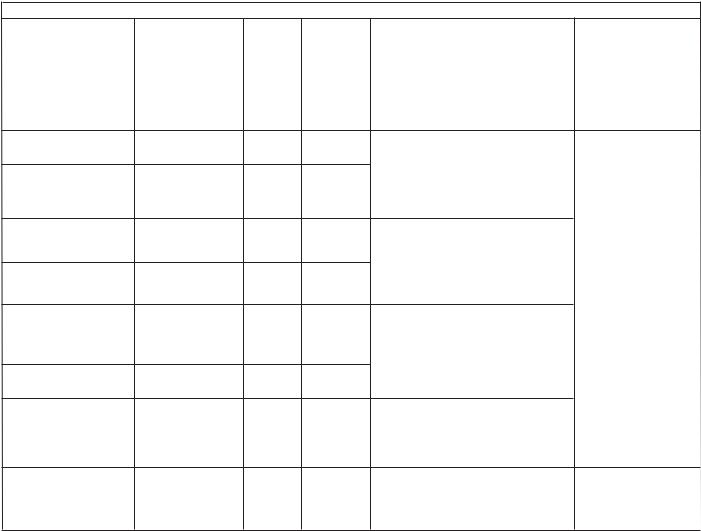
DUAL-CIRCUIT UNITS
Description |
Connector/channel |
Terminal |
Board |
Remarks |
Remarks |
Alarm relay output |
J3 / CH24 |
30A - 31A |
Master NRCP- |
Indicates alarms/alerts for circuit A* |
circuit A |
|
|
BASE |
|
Alarm relay output |
J3 / CH24 |
30B - 31B |
Slave NRCP- |
Indicates alarms/alerts for circuit B* |
circuit B |
|
|
BASE |
|
Boiler relay output |
J3 / CH25 |
37 - 38 |
Master NRCP- |
Boiler start/stop control output. |
|
|
|
BASE |
See section 5.13. |
Volt-free contact 24 V a.c. 48 V d.c. max, 20 V a.c. or V d.c., 3 A max, 80 mA min, external power supply.
Connector: 4 pin
WAGO 734-104 pitch 3.5. One per board needed.
Contact 1: |
J4 / CH8 |
32 - 33 |
Master NRCP- |
The contacts are used for unit start/stop and |
start/stop/heat/cool |
|
|
BASE |
heat/cool control. They are only taken into |
|
|
|
|
account if the unit is under remote operation |
Contact 2: |
J4 / CH9 |
63 - 64 |
Master NRCP- |
control (rEM). |
start/stop/heat/cool |
|
|
BASE |
|
|
|
|
|
See the description of these contacts in |
|
|
|
|
sections 3.6.2 and 3.6.3. |
24 V a.c., 20 mA
Connector: 8 pin WAGO 734-168, pitch 3.5
Contact 3: |
J4 / CH10 |
73 - 74 |
Master NRCP- |
These dry contacts are used for demand |
demand limit selection |
|
|
BASE |
limit selection. See description of these |
|
|
|
|
contacts in section 3.6.5. |
Contact 4: |
J4 / CH10 |
75 - 76 |
Slave |
The remote demand limit selection contact is |
demand limit selection |
|
|
NRCP-BASE |
active whatever the operating type of the |
|
|
|
|
unit. |
Contact 5: |
J4 / CH8 |
65 - 66 |
Slave |
These dry contacts are used for setpoint |
setpoint selection |
|
|
NRCP-BASE |
selection. |
|
|
|
|
They are only taken into account if the unit is |
|
|
|
|
in remote control operating type (rEM). |
Control contact 6: |
J4 / CH9 |
67 - 68 |
Slave |
See the description of these contacts in |
setpoint selection |
|
|
NRCP-BASE |
sections 3.6.6. |
User safety loop input |
J4 / CH11a |
34 - 35 |
Master |
This contact is mounted in series with the |
|
|
|
NRCP-BASE |
water flow control contact. It can be used for |
|
|
|
|
any customer safety loop that requires that |
|
|
|
|
the unit is stopped, if it is open. |
|
|
|
|
If it is unused this contact must be bridged. |
Connection to CCN |
J12 |
1 - 2 - 3 |
Master |
An RS-485 bus is used for connection to the |
|
|
|
NRCP-BASE |
CCN. |
|
|
|
|
- Pin 1: signal + |
- Pin 2: ground - Pin 3: signal -
Connector: 3 pin WAGO 231-303, pitch 5.08
*The operation of these relays can vary depending on the user configuration. See section ‘Description of the User 2 configuration sub-menu’.
7
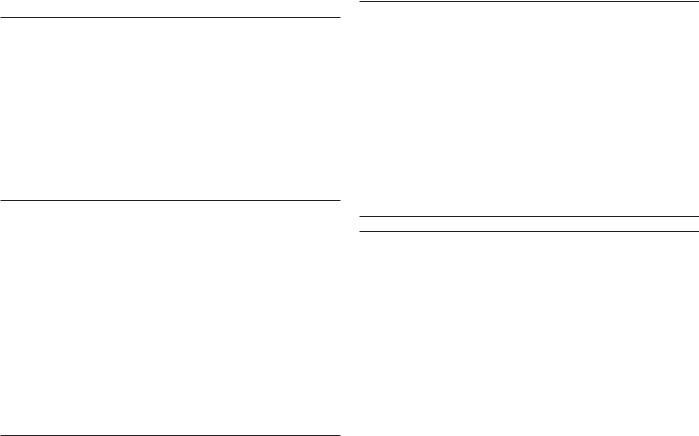
3.6.2 - Volt-free contact on/off/cooling/heating without multiplexing
If the automatic heating/cooling changeover function is not selected (see sections 4.3.11.3, 5.1 and 5.2) the operation of contacts 1 and 2 is as follows:
|
OFF |
ON cooling |
ON heating |
Contact 1 |
Open |
Closed |
Closed |
Contact 2 |
- |
Open |
Closed |
Contact status not significant
3.6.3 - Volt-free contact on/off/cooling/heating with multiplexing
If the automatic heating/cooling changeover function is selected (see sections 4.3.11.3, 5.1 and 5.2) the operation of contacts 1 and 2 is multiplexed:
|
OFF |
ON cooling |
ON heating |
ON auto |
Contact 1 |
Open |
Closed |
Closed |
Open |
|
|
|
|
|
Contact 2 |
Open |
Open |
Closed |
Closed |
|
|
|
|
|
NOTE: The automatic changeover function (ON auto) selects the cooling or heating mode based on the outdoor temperature (see section 5.2).
3.6.4 - Demand limit or setpoint volt-free contact for singlecircuit units
On single-circuit units contact 3 determines the selection of demand limit or setpoint, based on the configuration (see User Configuration 1 menu).
Demand limit selection |
Setpoint selection |
||
100% |
Limit 1 |
Setpoint 1 |
Setpoint 2 |
(no limit) |
|
|
|
|
|
|
|
Contact 3 Open |
Closed |
Open |
Closed |
3.6.5 - Demand limit volt-free contact for dual-circuit units
On dual-circuit units the operation of the demand limit selection contacts is multiplexed. The demand limit setpoints are adjustable in the setpoint menu (see section 4.3.8).
|
100% |
Limit 1 |
Limit 2 |
Limit 3 |
|
(no limit) |
|
|
|
Contact 3 |
Open |
Closed |
Open |
Closed |
Contact 4 |
Open |
Open |
Closed |
Closed |
3.6.6 - Water setpoint selection volt-free contact with multiplexing for dual-circuit units
On dual-circuit units the operation of the cold water or hot water setpoint selection contacts is multiplexed. The set-points are adjustable in the setpoint menu (see section 4.3.8). Auto means that the active setpoint is determined by the setpoint schedule (see section 5.6.1).
Cooling mode
|
Setpoint 1 |
Setpoint 2 |
Setpoint 3 |
Auto |
Contact 5 |
Open |
Open |
Closed |
Closed |
Contact 6 |
Open |
Closed |
Open |
Closed |
|
|
|
|
|
Heating mode |
|
|
|
|
|
|
|
|
|
|
Setpoint 1 |
Setpoint 2 |
Setpoint 3 |
Auto |
|
|
|
|
|
Contact 5 |
Open |
Open |
Closed |
Closed |
Contact 6 |
Open |
Closed |
Open |
Closed |
8

4 - SETTING UP PRO-DIALOG CONTROL
4.1 - Local interface general features
|
MAIN INTERFACE |
|
SUMMARY INTERFACE |
|
|
||||
|
|
|
|
|
|
|
|
|
|
|
|
|
|
|
|
|
|
|
|
|
|
|
|
|
|
|
|
|
|
|
|
|
|
|
|
|
|
|
|
|
|
|
|
|
|
|
|
|
|
|
|
|
|
|
|
|
|
|
|
|
|
|
|
|
|
|
|
|
|
|
|
|
|
|
|
|
|
|
|
|
|
|
|
|
|
|
|
|
|
|
|
|
|
|
|
|
|
|
|
|
|
|
|
|
|
|
|
|
|
|
|
|
|
|
|
|
|
|
|
MENU BLOCK |
PRO-DIALOG PLUS INTERFACE |
PRO-DIALOG JUNIOR INTERFACE |
The local interface enables a number of operating parameters to be displayed and modified.
The interface consists of two distinct parts: the main interface (left-hand section) and the summary interface (right-hand section).
Main interface
It gives access to all PRO-DIALOG data and operating functions. It consists of:
•A two-digit display showing the number of the item selected.
•A four-digit display showing the contents of the item selected.
•LEDs and buttons for unit start/stop, menu selection, menu item selection and value adjustment.
PRO-DIALOG Junior interface: On some units the local user interface consists only of a simplified main interface (left-hand section) that is identical to the main interface described below, but does not include the menu block diodes.
MAIN INTERFACE
BUTTON |
NAME |
DESCRIPTION |
|
|
|
Menu |
Permits the selection of a main menu. Each main menu is represented by an icon. The icon is lit if active. |
||
|
|
|
||
|
Up arrow |
Permits scrolling through the menu items (in the two-digit display). If the modification mode is active this button authorises |
||
|
|
increase of the value of any parameter. |
|
|
|
|
|
||
|
Down arrow |
Permits scrolling through the menu items (in the two-digit display). If the modification mode is active this button authorises |
||
|
|
decrease of the value of any parameter. |
|
|
|
Enter |
Gives access to the modification mode, validates a modification or displays expanded item description. |
||
|
|
|
|
|
|
Start/stop |
Authorises start or stop of the chiller in local mode or modification of its operating type. |
|
|
|
|
|
|
|
MAIN INTERFACE MENU LED'S |
|
|
|
|
|
|
|
|
|
LED* |
NAME |
|
DESCRIPTION |
INTERFACE DISLAY |
|
INFORMATION menu |
Displays the general operating parameters for the unit. |
Information |
|
|
|
|
|
|
|
TEMPERATURES menu |
Displays the unit operating temperatures. |
Temperatures |
|
|
|
|
|
|
kPa |
PRESSURES menu |
Displays the unit operating pressures. |
Pressures |
|
|
|
|
|
|
|
SETPOINTS menu |
Displays the unit setpoints and enables them to be modified. |
Setpoints |
|
|
|
|
|
|
|
INPUTS menu |
|
Displays the status of the unit digital and analogue inputs. |
Inputs |
|
|
|
|
|
|
OUTPUTS/TESTS menu |
Displays the status of the unit outputs and enables them to be tested. |
Outputs |
|
|
|
|
|
|
|
CONFIGURATIONS menu |
Displays the unit configuration and enables it to be modified. |
Confguration |
|
|
|
|
|
|
|
ALARMS menu |
|
Displays active alarms. |
Alarms |
|
|
|
|
|
|
ALARMS HISTORY menu |
Displays the history of the alarms. |
History |
|
|
|
|
|
|
|
RUNTIMES menu |
|
Displays the operating times and number of starts for the unit and the |
Runtimes |
|
|
|
compressors. |
|
* Not available on the PRO-DIALOG Junior interface.
9
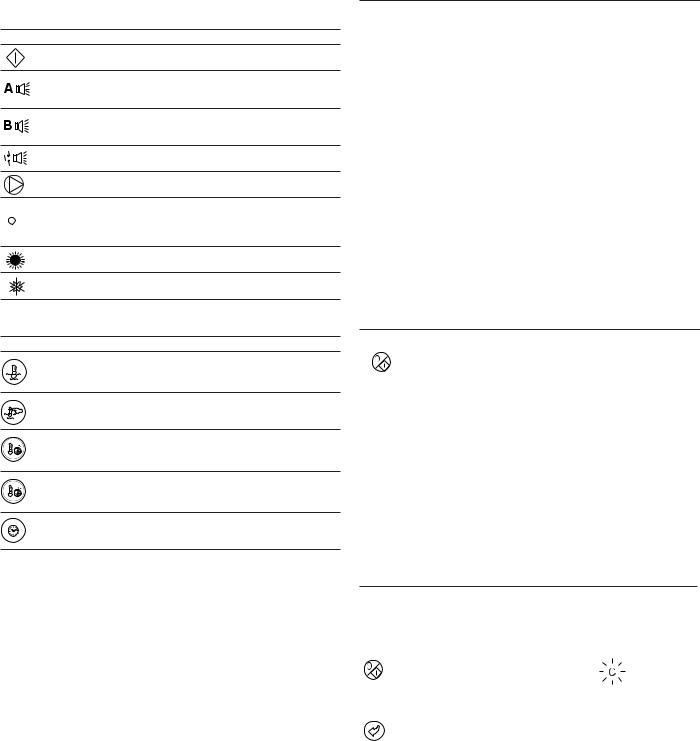
The summary interface (right hand section) includes a mimic diagram of the unit, together with push-buttons and LEDs. It gives quick access to the main operating parameters of the unit.
SUMMARY INTERFACE LEDs*
LED INDICATION WHEN LIT
Green LED:
The unit is authorised to start or is already running
Red LED:
- Lit: circuit A or unit shut down by alarm
- Flashing: circuit A or unit running with alarm present
Red LED:
- Lit: circuit B or unit shut down by alarm
- Flashing: circuit B or unit running with alarm present
Red LED:
Water flow switch default or user safety lock open.
Green LED:
The evaporator pump is running.
Yellow LEDs:
From top to bottom - start/stop status of compressor A1, A2 and A3 or B1, B2 and B3. Flashing LED indicates that the circuit is in the protection or defrost mode (A or B).
Green LED:
The unit operates in heating mode.
Green LED:
The unit operates in cooling mode.
* Not available on the PRO-DIALOG Junior interface.
SUMMARY INTERFACE PUSH BUTTONS*
BUTTON DISPLAY
Blue button: evaporator leaving or entering water temperature in °C Gray button: outdoor air temperature in °C
Control point (setpoint + reset) in °C
Press 1: circuit A/B discharge pressure in kPa
Press 2: circuit A/B saturated condensing temperature in °C
Press 1: circuit A/B suction pressure in kPa
Press 2: circuit A/B saturated suction temperature in °C
Press 1: compressor A1/B1 operating hours in h/10 or h/100
Press 2: compressor A2/B2 operating hours in h/10 or h/100
Press 3: compressor A3/B3 operating hours in h/10 or h/100
* Not available on the PRO-DIALOG Junior interface.
4.2 - Unit start/stop control
4.2.1 - Description
The unit start/stop can be controlled by one of the following methods:
•Locally on the actual unit (Local control type)
•By remote control with the aid of user contacts (remote control type)
•By CCN control with the aid of the CCN (CCN control type)
The main interface includes a Start/Stop button which can be used to stop or start the unit in the local operating type or to select the remote or CCN operating type.
The available operating types are described in the following table.
The following operating types can be selected using the Start/Stop button:
OPERATING TYPES
4 DIGIT DISPLAY |
DESCRIPTION |
LOFF |
Local Off. The unit is halted in local mode. |
L-On |
Local On. The unit is in local control mode and is |
|
authorised to start. |
L-Sc* |
Local On - timer control. The unit is in local control |
|
mode. It is authorised to start if the period is occupied. |
|
If the timer program for unit operation is unoccupied, |
|
the unit remains shut down until the period becomes |
|
occupied. |
CCN* |
CCN. The unit is controlled by CCN commands. |
rEM* |
Remote. The unit is controlled by remote control |
|
contacts. |
MAST* |
Master Unit. The unit runs as a master in a two unit |
|
lead/lag arrangement. This is displayed if the unit is |
|
configured for master/slave control. |
Legend
*Displayed if the configuration requires it.
Section 5.1 gives a more detailed description of the commands to start/stop the unit, analysed by operating type.
4.2.2 - Stopping the unit in local mode
The unit can be stopped in local mode at any time by pressing the Start/Stop button.
TO STOP THE UNIT
BUTTON ACTION |
2-DIGIT DISPLAY |
4-DIGIT DISPLAY |
Press the Start/Stop |
C |
LOFF |
button for less than |
|
|
4 seconds (one short |
|
|
press is enough). |
|
|
If the button is |
t |
LOFF |
released, the unit stops |
|
|
without the need for |
|
|
further action. |
|
|
4.2.3 - Starting unit and selecting an operating type
The unit can be started in local mode, or unit operating type can be changed at any time using the Start/Stop button. In the example that follows, the unit is stopped (LOFF) and the user wants to start the unit in local mode.
START UP WITH THE PREVIOUSLY USED OPERATING TYPE WHEN THE UNIT IS STOPPED IN LOCAL MODE (LOFF)
BUTTON ACTION |
2-DIGIT |
4-DIGIT |
|
DISPLAY |
DISPLAY |
The unit is in local stop mode. The |
|
LOFF |
previously used operating type is local on |
|
|
(L-ON) |
|
|
Press the Start/Stop button for 4 seconds |
|
L-On |
(one short press-down is sufficient). L-ON |
|
|
illuminates immediately. "C" flashes in the |
|
|
2-digit display to show that the controller is |
|
|
awaiting confirmation. |
|
|
Press the Enter button to confirm the |
t |
L-On |
operating type. "t" is displayed in the 2-digit |
|
|
display to indicate the operating type |
|
|
selected. If the Enter button is not pressed |
|
|
soon enough, the controller will cancel the |
|
|
change and remain in the stop mode. |
|
|
10
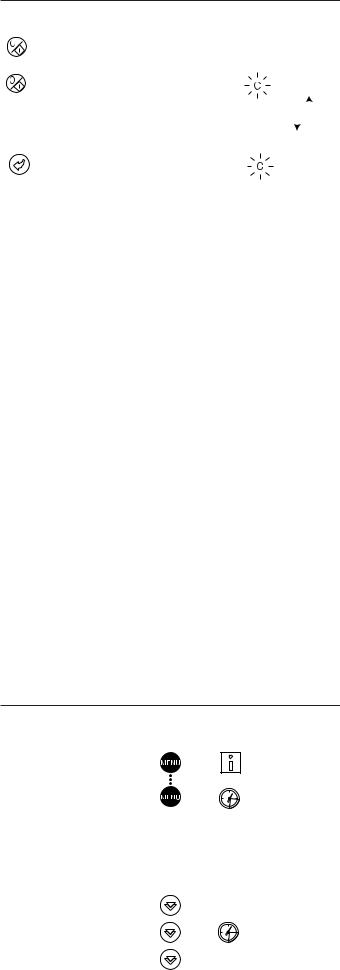
CHANGING THE OPERATING TYPE
BUTTON ACTION |
2-DIGIT |
4-DIGIT |
||
|
DISPLAY |
DISPLAY |
||
Continually press the operating type |
C |
LOFF |
||
selection button for more than 4 seconds. |
|
|
|
|
|
|
|
|
|
Hold down the Start/Stop button. |
|
L-On |
||
The available operating types are displayed |
|
L-Sc |
||
one by one until the button is released. |
|
|
|
|
|
|
|
|
|
|
|
|
|
|
|
|
|
|
|
|
|
rEM |
||
|
|
|
|
|
Release the Start/Stop button if the |
|
L-On |
||
operating type you want is displayed (in this |
|
|
|
|
example L-On). "C" flashes in the 2-digit |
|
|
|
|
display to show that the controller is |
|
|
|
|
awaiting confirmation. |
|
|
|
|
|
|
|
|
|
Press the Enter button to confirm the |
t |
L-On |
||
operating type selected (in this example: |
|
|
|
|
L-On). "t" is displayed in the 2-digit display |
|
|
|
|
to indicate the operating type selected. If the |
|
|
|
|
Enter button is not pressed soon enough, |
|
|
|
|
the controller will cancel the change and |
|
|
|
|
continue to use the previous operating type. |
|
|
|
|
4.3 - Menus
4.3.1 - Selecting a menu
The MENU button authorises you to select a menu from the 10 main menus that are available. Each time you press this button one of the 10 LEDs lights up in turn alongside each of the icons representing a main menu. The active menu is the one against which the LED is lit. If a menu is empty then its LED is not lit. To scroll quickly through the menus, hold the MENU button down.
4.3.2 - Selecting a menu item
The up and down Arrow buttons let you scroll through the menu items. Menu item numbers are displayed in the two-digit display. The item number increases or decreases every time you press the up or down Arrow button. The menu items that are not in use or incompatible with the configuration are not displayed. The value or status associated with the active item is displayed in the four-digit display. To scroll quickly through the items, hold the up or down Arrow button down.
The following example shows how to access item 3 in the Pressures menu.
SELECTING A MENU ITEM
OPERATION |
PRESS |
MENU LED ITEM NUMBER |
|
BUTTON |
2-DIGIT |
|
|
DISPLAY |
Press the MENU button until the |
|
0 |
LED marked PRESSURE lights. |
|
Note: On the PRO-DIALOG Junior |
kPa |
interface the menu LEDs are not |
|
available. Instead, each time the |
|
menu button is pressed, the name |
|
of the active menu is dsplayed in |
|
the 4-digit display. In this example, |
|
press the MENU button until |
|
PRESSURE is displayed in the |
|
4-digit display. |
|
|
|
Press one of the Arrow buttons |
1 |
until the two-digit display shows 3 |
kPa |
(item number 3). |
|
|
2 |
|
3 |
4.3.3 - Modifying the value of a parameter/access to a submenu
Press the Enter button for more than 2 seconds to enter the modification mode or to select a sub-menu. This lets you correct the value of an item or select a sub-menu with the aid of the up and down Arrow buttons (if you are authorised to overwrite the item concerned). When modification mode is activated, the LED for the main menu to which the item belongs as well as the 2- digit display flash in the menu block. Once the required value is obtained, press the Enter button again to validate the change or to access the sub-menu. The LED for the menu to which the item and the 2-digit display belong then stops flashing, indicating that modification mode no longer applies.
In modification mode, the value to be modified increases or decreases in steps of 0.1 every time you press the Arrow buttons. Holding one of these buttons down increases the rate of increase or decrease.
NOTE: The access to a sub-menu may require entering a password. This is automatically requested. See section 4.3.11.2.
The following example shows how to modify the value of item 1 in the Setpoint menu.
11
